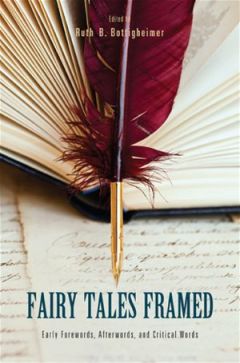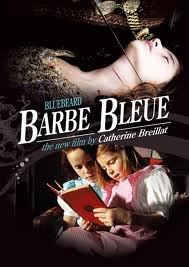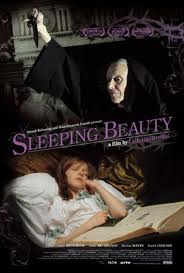On Context, and Donkey Skins
April 2, 2012 § 2 Comments
A Review of Fairy Tales Framed, ed. Ruth Bottigheimer, pub. SUNY Press 2012
First of all, readers, let me say sorry for the hiatus. Secondly, let me re-introduce myself to you. Hi, I’m Cate, and I’m a fairy tale snob. A snot-nosed academic. A purist, a full throttle believer in information and context when it comes to the stories I love. A while ago, I posted an essay in which I talked about the false consciousness of Disney fans, and the unnatural churning in my stomach that occurs when I read a young woman claim that a Disney film (The Little Mermaid was the specific culprit) taught her all she wants to know about love and life—and that no other version is acceptable.
My mission, both on this blog and in my life, is to be the counterweight to these girls, these girls who say they love The Little Mermaid but who probably have no clue who Hans Christian Andersen is. If snark is required, so be it. But more than snark, context is required. So what follows in this post is what I hope will be the first of many reviews on this blog of published and forthcoming critical works on fairy tales and folk lore. I’ve mentioned some tomes here on the Train before, but I’d like to devote some real attention to them, in hopes of building a list of resources for you, readers, who also appreciate the history of the stories you love.
 And how better to start exploring this idea of context than with Fairy Tales Framed, due this spring from SUNY Press—as local as local gets for me, as I live in the Hudson Valley and am a SUNY New Paltz alum myself—and edited by Ruth B. Bottigheimer, Research Professor of Comparative Literacy and Cultural Studies at SUNY Stonybrook. Fairy Tales Framed is a collection of letters, forewords, responses and extracts by fairy tale authors of Italy and France, including Marie-Catherine d’Aulnoy, Giambattista Basile, and Charles Perrault. To no one’s surprise here, these fairy tale authors of the 16th and 17th Century had plenty to say about their writing and their mission—but these reflections were removed from their published tales, leaving readers to interpret the authors’ intentions for themselves. The collected pieces in Fairy Tales Framed give fairy tale scholars and enthusiasts new insight into the historical context of the first literary fairy tales, and their authors’ opinions about the reception and importance of their work. « Read the rest of this entry »
And how better to start exploring this idea of context than with Fairy Tales Framed, due this spring from SUNY Press—as local as local gets for me, as I live in the Hudson Valley and am a SUNY New Paltz alum myself—and edited by Ruth B. Bottigheimer, Research Professor of Comparative Literacy and Cultural Studies at SUNY Stonybrook. Fairy Tales Framed is a collection of letters, forewords, responses and extracts by fairy tale authors of Italy and France, including Marie-Catherine d’Aulnoy, Giambattista Basile, and Charles Perrault. To no one’s surprise here, these fairy tale authors of the 16th and 17th Century had plenty to say about their writing and their mission—but these reflections were removed from their published tales, leaving readers to interpret the authors’ intentions for themselves. The collected pieces in Fairy Tales Framed give fairy tale scholars and enthusiasts new insight into the historical context of the first literary fairy tales, and their authors’ opinions about the reception and importance of their work. « Read the rest of this entry »
Stepping Into the Story: Catherine Breillat’s Bluebeard and The Sleeping Beauty
January 20, 2012 § Leave a comment
Part One: Bluebeard
 Bizarre, enchanting, sparsely told yet thematically intense. Bluebeard and The Sleeping Beauty, parts one and two of a triptych of fairy tale films (Beauty and the Beast will be third) by director Catherine Breillat are, for my money, touchstones, criterions, truly exceptional examples of what a fairy tale adaptation can be.
Bizarre, enchanting, sparsely told yet thematically intense. Bluebeard and The Sleeping Beauty, parts one and two of a triptych of fairy tale films (Beauty and the Beast will be third) by director Catherine Breillat are, for my money, touchstones, criterions, truly exceptional examples of what a fairy tale adaptation can be.
In other words, they’re pretty boss.
As entertainment for a casual viewer, let me tell you, these two are flawed. Breillat doesn’t allow her films to be entirely self-explanatory, and believe me, I’ve had quite a time trying to parse out a concise thesis from the myriad impressions swimming through my brain. Even for the more discerning film viewer, there are flaws: Breillat espouses  some narrative devices that are just, to put it kindly, awkward as all-get-out, and thematic explorations that take at least two more viewings to get even a handle on. In this review, I’m not going to try and argue that these films are perfect—but that for a fairy tale lover (and you know what I mean—we’re not talking Disney here, ever), these are required viewing.
some narrative devices that are just, to put it kindly, awkward as all-get-out, and thematic explorations that take at least two more viewings to get even a handle on. In this review, I’m not going to try and argue that these films are perfect—but that for a fairy tale lover (and you know what I mean—we’re not talking Disney here, ever), these are required viewing.
Though I can see these two films working thematically in tandem, I’m going to start by talking about each separately, beginning with Bluebeard.
Bluebeard is deceptive.